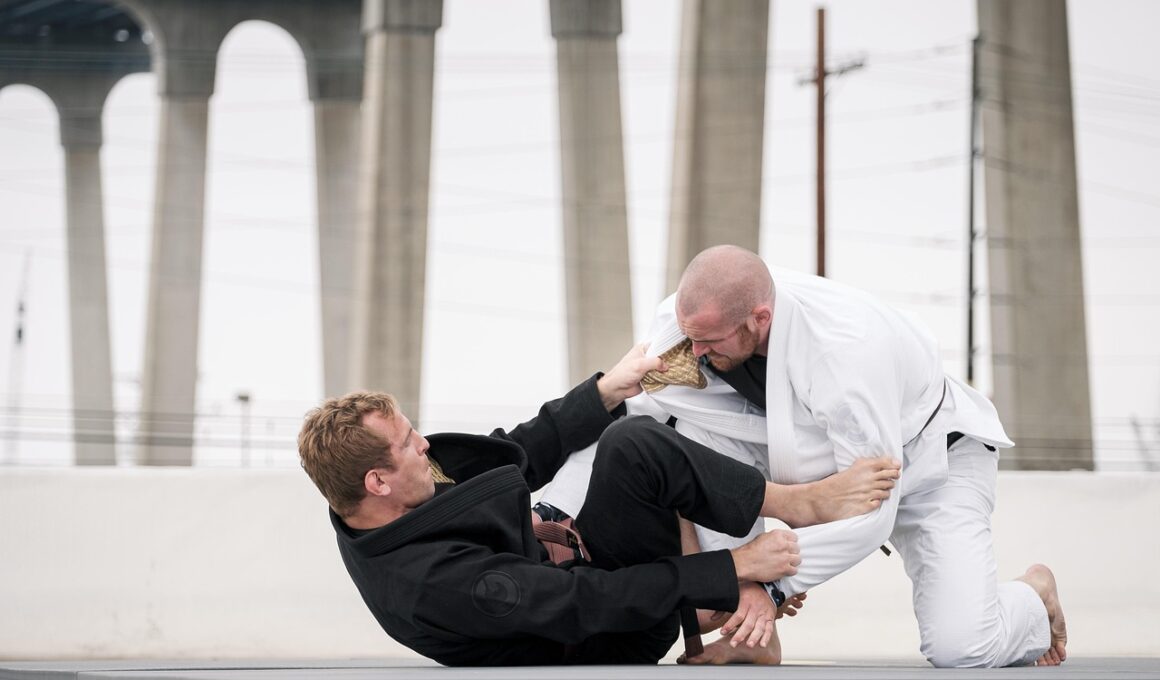Advanced Eskrima Techniques: Elevate Your Skills
Eskrima is a Filipino martial art that focuses on weapon-based combat and self-defense techniques. Studying advanced Eskrima requires dedication, focus, and a willingness to adapt to various situations. Practicing regularly will allow you to refine your skills, making you more effective in both training and potential real-world scenarios. Understanding the nuances of footwork, timing, and distance management is critical for mastering your craft. Explore various techniques such as strikes, blocks, disarms, and counters with a partner during your training sessions. This practical application will not only improve your speed but also enhance your reaction time. Always strive for precision in your movements for better control over your weapon. Incorporate drills that emphasize muscle memory, enabling you to react instinctively when faced with threats. Additionally, delving deeper into the history and philosophy of Eskrima will enable you to grasp its cultural significance and elevate your practice. Study the works of noted masters and practitioners to gain diverse perspectives on technique and strategy. Ultimately, immerse yourself in the community as you further develop your skills.
To enhance your proficiency in advanced Eskrima techniques, you’ll need to focus on specific areas such as flow drills and sparring simulations. Flow drills are essential because they promote seamless transitions between techniques, allowing you to react fluidly. In these drills, partners practice a series of movements back and forth, refining their timing and accuracy. This builds confidence and comfort with various techniques, from basic strikes to advanced combinations. Sparring simulations provide you with a real-time combat experience that mimics actual situations, further emphasizing the application of learned strategies. As you gain more experience, try incorporating elements of unpredictability, which will challenge your adaptability and decision-making skills. Working with diverse partners can broaden your understanding of Eskrima, exposing you to different styles and approaches to combat. Make it a point to analyze your performance after each session, focusing on areas that need improvement. Continuous learning is fundamental in martial arts, so consider attending workshops or seminars led by experienced practitioners. These opportunities will further ignite your passion for Eskrima and expand your knowledge base.
Importance of Footwork in Eskrima
In Eskrima, footwork is a crucial aspect that directly impacts your effectiveness during combat. Mastering footwork allows practitioners to support their attacks while maintaining distance and an optimal position. Proper foot positioning is essential for both offense and defense. As you advance your skills, focus on achieving fluid movement patterns that enable you to shift between stances seamlessly. A strong understanding of angles will empower you to navigate around your opponent while avoiding direct attacks. Drills that emphasize lateral movement and pivoting can enhance your agility and responsiveness. It is also crucial to develop stability in your stance, allowing for stronger strikes and counters. Work on specific drills that help you identify when to close the distance or create space, as these decisions can make a significant difference during a confrontation. Practicing with a partner regularly will help you sense their movements and anticipate their actions, contributing to your strategic understanding of combat dynamics. Regardless of your current skill level, paying attention to footwork will dramatically improve your overall performance in Eskrima.
Beyond footwork, advanced Eskrima techniques involve the successful integration of weapons into your training regimen. Various weapons, including sticks, blades, and improvised tools, require different handling skills. Consequently, practice should encompass multiple weapon types to ensure versatility. Begin with traditional training methods focused on form and control, gradually progressing to live drills and sparring situations. Carrying out weapon exchanges with your partner enhances your understanding of timing and accuracy. Make it a point to understand not just the weapon itself, but also how to defend against one, reinforcing your awareness. Gaining proficiency in disarming techniques will make you resourceful in a confrontation. An excellent way to improve your weapon training is through visualization techniques—mentally rehearsing scenarios in which you may need to defend yourself. Additionally, explore the craftsmanship behind the weapons you train with to appreciate the history and culture tied to them. Dedicating time to weapon-centric training will enhance both your confidence and proficiency as a martial artist. Finally, maintain a humble attitude while learning; embracing the journey will facilitate continuous growth.
Effectiveness of Combination Techniques
Fusing various techniques into combinations is vital for advancing your skills in Eskrima. Combination techniques enable practitioners to launch simultaneous attacks and defenses, creating openings for follow-up strikes. To master these combinations, start by isolating individual techniques such as strikes, parries, or footwork patterns for focused practice. Gradually, challenge yourself by blending them into fluid sequences, maintaining precise execution throughout. An effective combination not only relies on technique but also on timing. Work with a training partner to practice counter-attacks and defensive movements, building both reflexes and instincts. Remember, a well-timed offensive move can disorient your opponent and give you an advantage. In your training, prioritize developing combinations that match your personal style and strengths. What may work effectively for one individual might not for another, so formulate a unique approach. Keep variations in mind—try different angles and levels for attacks to keep your opponent guessing. Ultimately, the diversity in your combination techniques will elevate your strategy, making you an unpredictable and formidable opponent.
Incorporating mental preparation is just as important as the technical practice in advanced Eskrima. Effective martial artists know that a strong mind is pivotal for success in both training and competition. Begin by establishing mental conditioning techniques, such as visualization and meditation, to enhance focus and clarity. Visualization involves mentally rehearsing various techniques and combat scenarios, enabling better preparedness during actual encounters. Meditation promotes mindfulness which can help manage stress and anxiety while developing a sense of calmness, aiding during high-pressure situations. These practices create a mental fortitude that supports strategic thinking while in movement. Along with mental strength, developing awareness and situational analysis enhances your decision-making abilities during training sessions or competitions. Always strive for self-improvement, constantly reflecting on your performance and identifying areas that require growth. Engage in discussions with fellow practitioners to share insights and gain new perspectives. As you delve deeper into the mental aspects of Eskrima, remember that your mindset acts as a foundation upon which your physical skills are built. Cultivating both elements will undoubtedly lead to improved overall performance.
Commitment to Continuous Learning
Advanced Eskrima techniques are not merely about mastering skills; they also encompass a commitment to continuous learning and growth. The landscape of martial arts is ever-evolving, and to remain effective, practitioners must stay updated with the latest techniques and strategies. Regular training and participation in seminars help expand your knowledge base while exposing you to diverse methodologies. Embracing a growth mindset encourages you to view challenges as opportunities to learn. Surrounding yourself with skilled practitioners can facilitate constant improvement, as you can observe and learn from their experiences. Consider the importance of mentorship; seeking guidance from more experienced Eskrima practitioners can provide invaluable insights into refining your skills. Additionally, participating in competitions is a powerful way to test your abilities against varied opponents, providing real-world context to your training. Ultimately, finding a balance between self-reflection and external feedback will drive your development. By continuously seeking to improve and adapt your skills, you will ensure that your Eskrima practice remains dynamic and relevant. Remember, martial arts is a lifelong journey that requires patience, innovation, and unwavering commitment.
As you progress in your Eskrima journey, embrace the idea that mastery is a continuous pursuit rather than a destination. Every training session holds the potential for discovery and growth, so approach each with an open mind and willingness to learn. Experiment with techniques, engage with fellow practitioners, and challenge your assumptions to encourage further mastery. Additionally, documenting your training experiences can foster effective learning by helping you track your progress and reflect on past lessons learned. Incorporating your own modifications to existing techniques will empower you to develop a more personal touch in your practice. Utilize online resources or reach out to the larger Eskrima community to gain additional insights that may enrich your training. The exchange of ideas and experiences can open new avenues for personal growth. Create an environment that fosters encouragement and collaboration amongst peers, which can lead to a more enjoyable and dynamic learning experience. In conclusion, embracing advanced Eskrima techniques requires dedication, resilience, and an openness to growth. This journey will not only elevate your skills but also enrich your martial arts practice as a whole.


